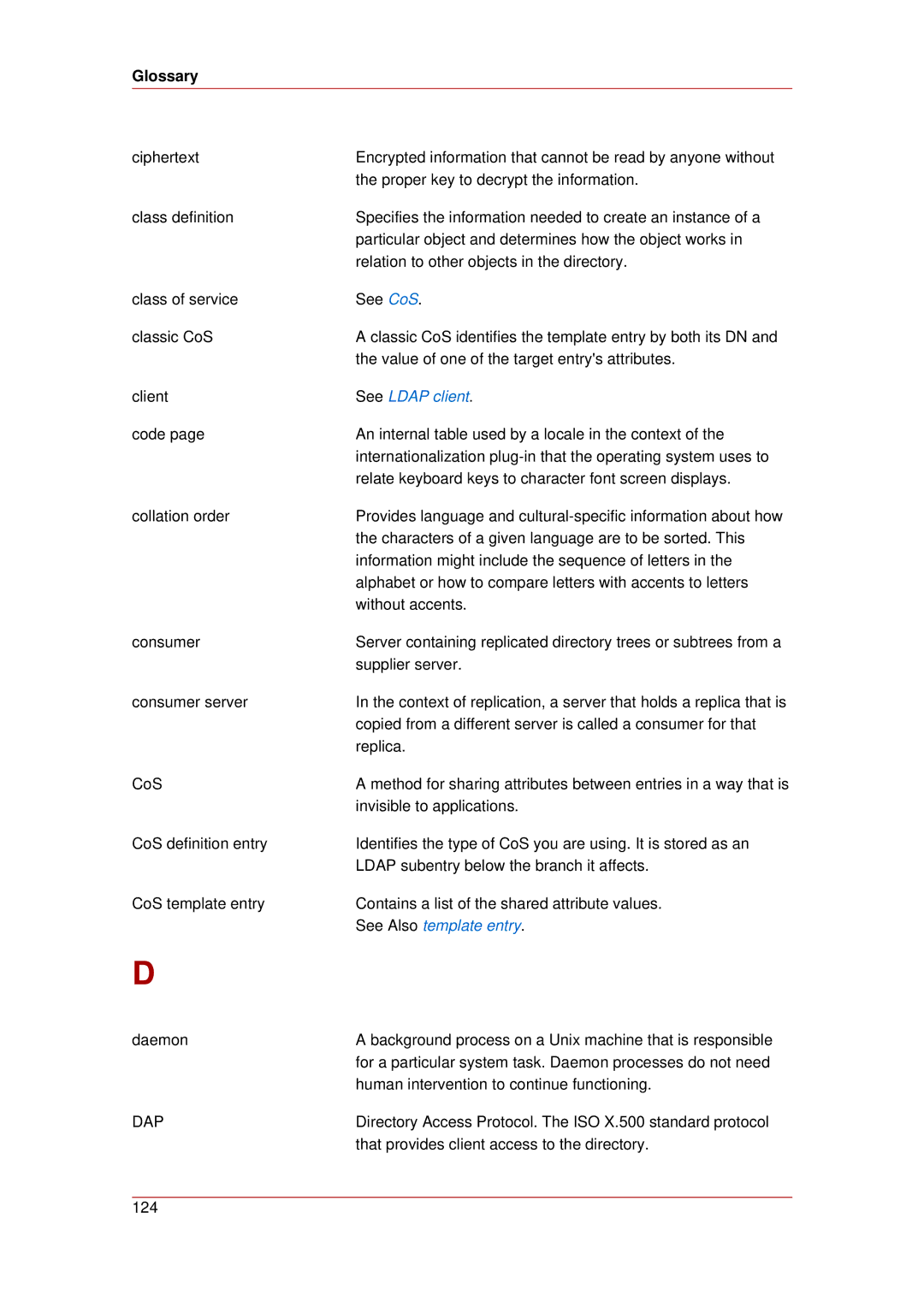
Glossary
ciphertext | Encrypted information that cannot be read by anyone without |
| the proper key to decrypt the information. |
class definition | Specifies the information needed to create an instance of a |
| particular object and determines how the object works in |
| relation to other objects in the directory. |
class of service | See CoS. |
classic CoS | A classic CoS identifies the template entry by both its DN and |
| the value of one of the target entry's attributes. |
client | See LDAP client. |
code page | An internal table used by a locale in the context of the |
| internationalization |
| relate keyboard keys to character font screen displays. |
collation order | Provides language and |
| the characters of a given language are to be sorted. This |
| information might include the sequence of letters in the |
| alphabet or how to compare letters with accents to letters |
| without accents. |
consumer | Server containing replicated directory trees or subtrees from a |
| supplier server. |
consumer server | In the context of replication, a server that holds a replica that is |
| copied from a different server is called a consumer for that |
| replica. |
CoS | A method for sharing attributes between entries in a way that is |
| invisible to applications. |
CoS definition entry | Identifies the type of CoS you are using. It is stored as an |
| LDAP subentry below the branch it affects. |
CoS template entry | Contains a list of the shared attribute values. |
| See Also template entry. |
D
daemon | A background process on a Unix machine that is responsible |
| for a particular system task. Daemon processes do not need |
| human intervention to continue functioning. |
DAP | Directory Access Protocol. The ISO X.500 standard protocol |
| that provides client access to the directory. |
124
